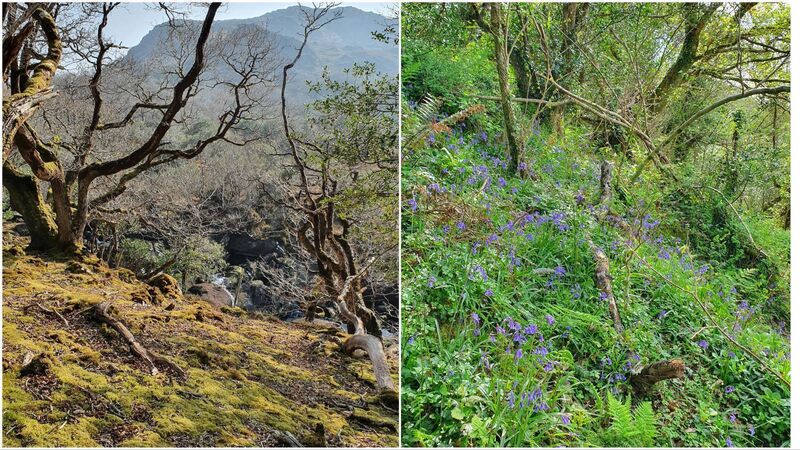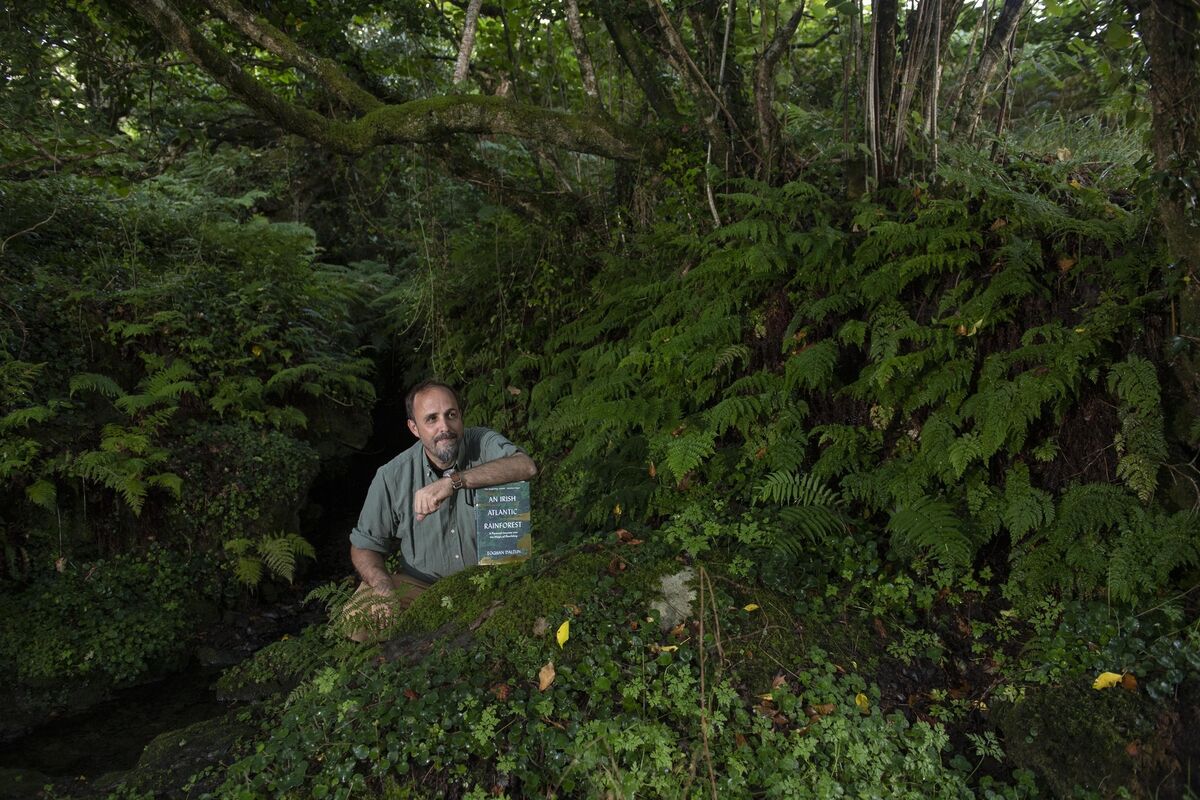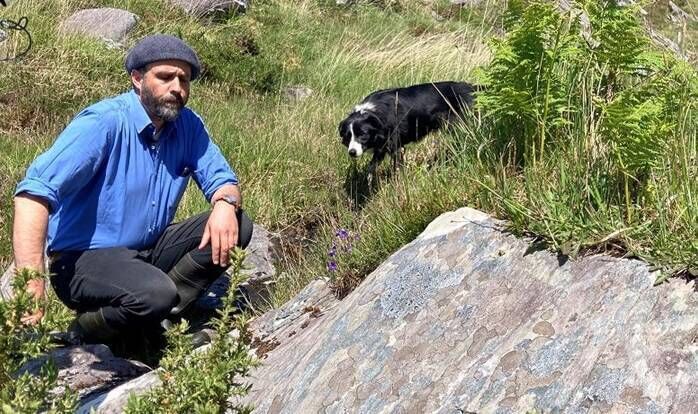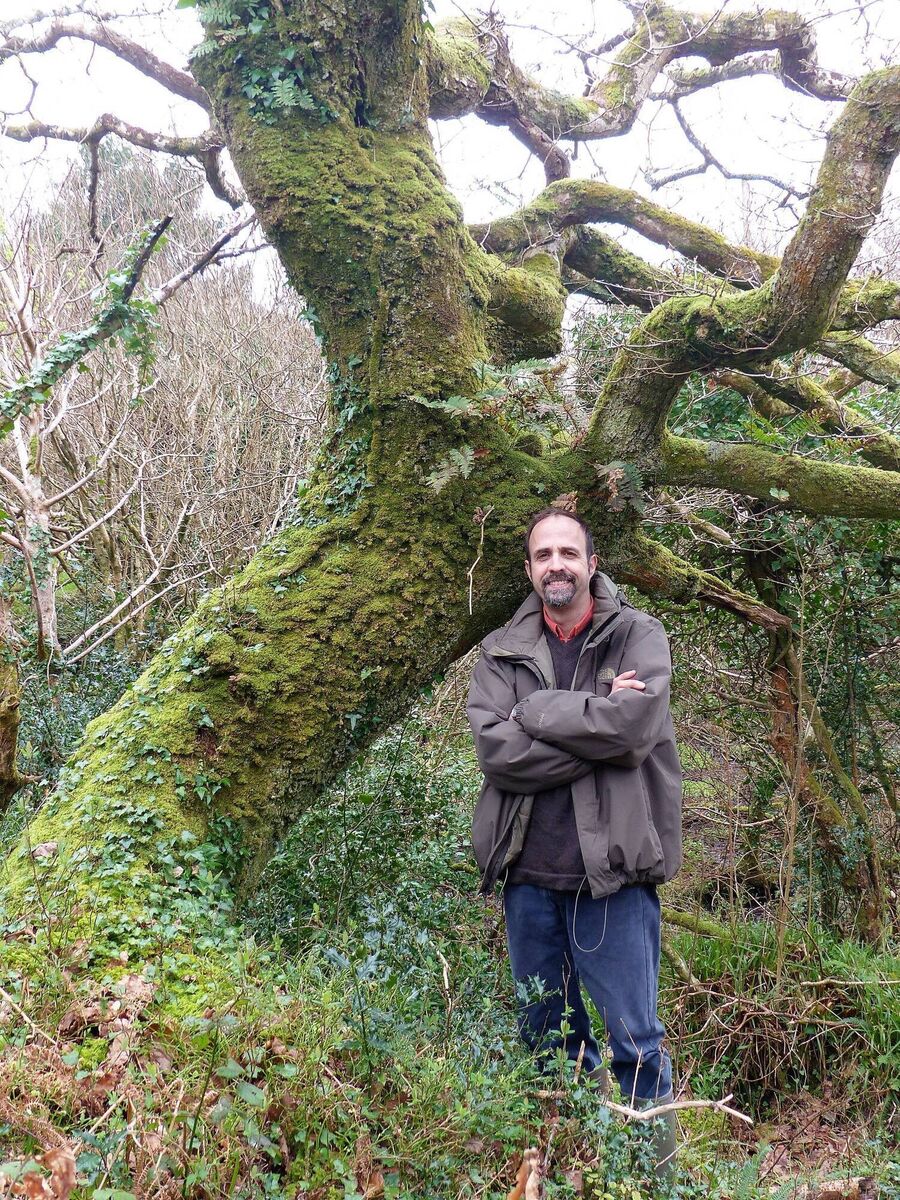Eoghan Daltun: We need rewilding on a massive scale in Ireland

Left: Killarney National Park — most of the park is so severely overgrazed by invasive non-native sika deer, feral goats, and sheep that there are no native tree seedlings or ground flora whatsoever — creating the perfect conditions for invasive species, rhododendron ponticum, to take over. Right: Eoghan Daltun's west Cork rainforest following restoration. Pictures: Eoghan Daltun
Ireland is one of the worst places on the entire planet for nature.
Does that statement seem exaggerated? It’s not: data from every quarter confirms it. For example, in 2018, researchers from the Natural History Museum of London compiled a ‘Biodiversity Intactness index’ of all 240 countries in the world. Ireland came in 13th from the bottom. That’s right: only in 12 countries is nature worse off than here — one of which is Northern Ireland.
That may come as a shock to many people, who perhaps equate green fields with a healthy environment, and have absorbed the official myth of the ‘Emerald Isle’, carefully crafted as a sales pitch for agricultural exports and tourism. But every single one of those green fields was once, at some point in time, species-rich wild natural habitat such as forest, wetland, bog or wildflower-rich grasslands, weaving in and out of each other and packed with a great diversity of animals and plants.

Replacing that with fields grazed by cattle or sheep, a process that has been going on for thousands of years, inevitably meant an enormous loss for nature, driving out all the many species that couldn’t adapt to an artificial landscape. And over the last 50 or 60 years things have worsened considerably, as agriculture has largely been transformed into a highly intensive, chemical and diesel-fed industry with the sole aim of maximising productivity. So that green field is now more than likely to be composed of one grass species only: high productivity perennial ryegrass, where in the past it would have been a great mixture of wild plants and flowers.
Forest is estimated to have covered 80% of Ireland before farming, but is now down to only around 1 or 1.5% (excluding monoculture plantations, which are not real forest, and are virtually useless to nature). Worse, the vast majority of those tiny remnants are ecologically wrecked. Take Killarney National Park, by far the largest and most important piece of semi-natural forest on the island of Ireland. Most of the park is so severely overgrazed by invasive non-native sika deer, feral goats, and sheep that there are no native tree seedlings or ground flora whatsoever — creating the perfect conditions for another terribly invasive species, rhododendron ponticum, to take over. Killarney’s rich forest is dying, and despite knowing this for more than half a century, authorities have done nothing effective to turn the situation around.

And it’s not just forests: more than 90% of protected habitats are classed as in bad condition. A huge range of native species, many of which are vital to the proper functioning of ecosystems, have been driven into extinction, while one in five of those remaining are currently assessed as heading in the same direction. For those who care about nature — and surveys consistently show that the vast majority of us do — it’s hard to imagine how the situation could be worse; but they are getting worse, right now, all around us.
But here’s the thing: it absolutely doesn’t need to be like this. There is a solution that works, and it’s called rewilding.

Quite simply, it means letting natural ecosystems return where they have been driven out, and usually all that’s required is that we stop doing the things we do to prevent it. That might all seem a little abstract, so let me briefly describe to you the rewilding I have been carrying out on my own 73-acre farm on the Beara Peninsula, West Cork.
When I bought the place in May, 2009 (I’m from Dublin), much of the land was already covered in wild native forest: a rich mixture of oak, holly, birch, hazel, willow, rowan and many other species. None of these trees had been planted, they simply grew because the family who lived here in the past, the Crowleys, had mostly emigrated to the United States in the 1930s. With few livestock to eat the constantly germinating tree seedlings, the forest came into existence spontaneously. However by the time I arrived, it was in the exact same state as Killarney NP and most other vestiges of natural woodland: grazed bare by invasive feral goats and sika deer, and in the early stages of being overwhelmed by rhododendron and a host of other invasive plants.
So I applied for a grant under the Native Woodland Scheme to fence out the goats and sika, and set to work in my spare time eliminating the rhododendron. Within a few years, I had cleared most of the invasive plants, and a fence had been erected, allowing the native vegetation to start recovering. Tree seedlings began to pop up everywhere and, because they were no longer being instantly eaten, were able to carry on growing. Many parts of the land that were unwooded have since reverted to young native forest; elsewhere, the transformation is happening more slowly, but everywhere it is happening, in nature’s time.
And it’s not just the trees that are returning: all the associated biodiversity is coming back too. Where previously the woodland floor was stripped bare, drifts of bluebells, wood anemone, dog violet, celandine, wood sorrel, and a fantastic variety of other wildflowers now appear in springtime. Insects and birds have proliferated in both diversity and abundance, and rare, protected species like pine martens, otters, and lesser horseshoe bats have either moved in or started using what is now an extremely rich habitat. (It’s actually rainforest, but that’s another story.) This regeneration hasn’t only been wonderful for all the thousands of wild creatures that live in the forest, it has brought indescribable joy into my life too. We could, and should, be similarly allowing all our natural habitats to return in Ireland on a massive scale: for nature, for the climate, and for ourselves.
- If you’re interested in learning more, you can read all about it in my book,, published last September. Also, find me on Twitter and Instagram under @Irish Rainforest





